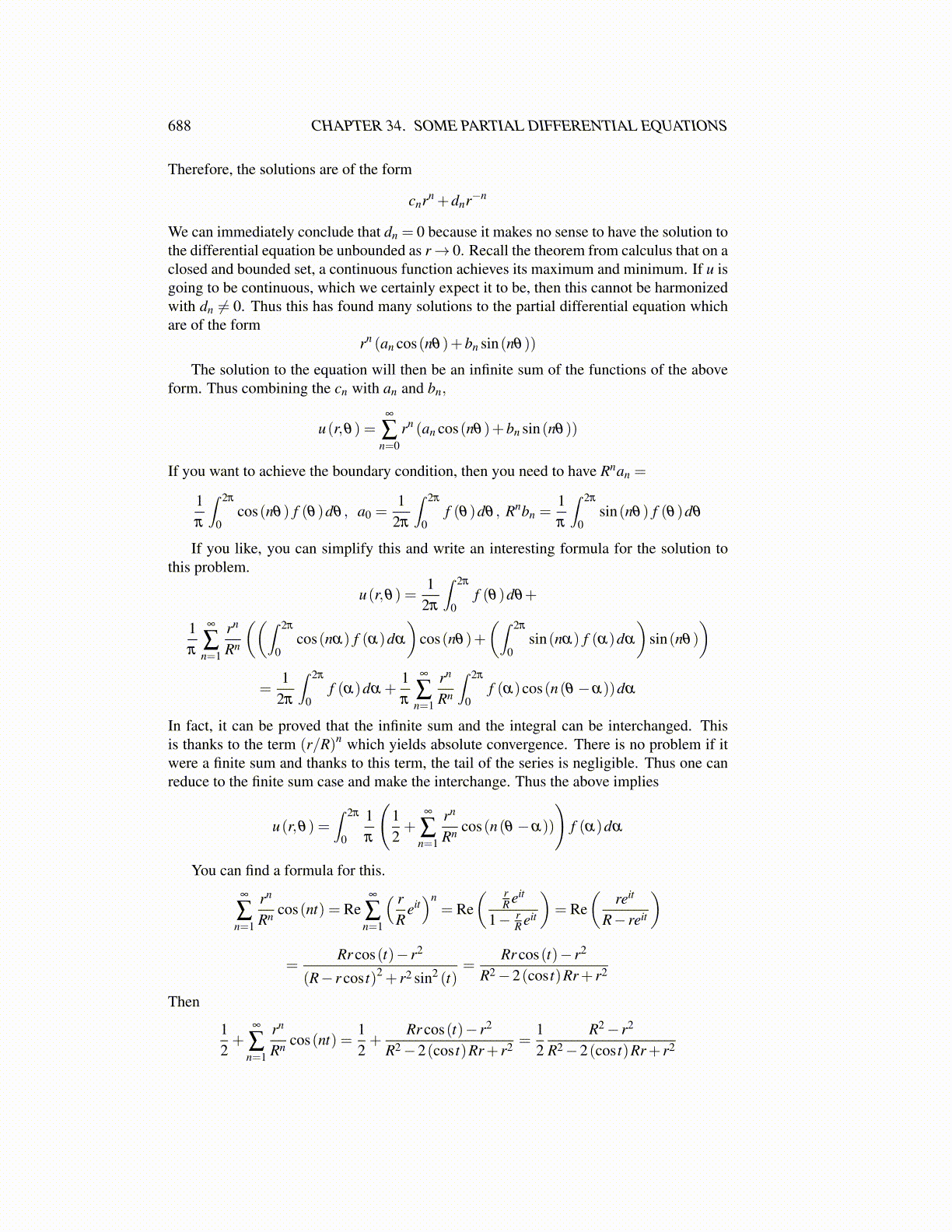
688 CHAPTER 34. SOME PARTIAL DIFFERENTIAL EQUATIONS
Therefore, the solutions are of the form
cnrn +dnr−n
We can immediately conclude that dn = 0 because it makes no sense to have the solution tothe differential equation be unbounded as r→ 0. Recall the theorem from calculus that on aclosed and bounded set, a continuous function achieves its maximum and minimum. If u isgoing to be continuous, which we certainly expect it to be, then this cannot be harmonizedwith dn ̸= 0. Thus this has found many solutions to the partial differential equation whichare of the form
rn (an cos(nθ)+bn sin(nθ))
The solution to the equation will then be an infinite sum of the functions of the aboveform. Thus combining the cn with an and bn,
u(r,θ) =∞
∑n=0
rn (an cos(nθ)+bn sin(nθ))
If you want to achieve the boundary condition, then you need to have Rnan =
1π
∫ 2π
0cos(nθ) f (θ)dθ , a0 =
12π
∫ 2π
0f (θ)dθ , Rnbn =
1π
∫ 2π
0sin(nθ) f (θ)dθ
If you like, you can simplify this and write an interesting formula for the solution tothis problem.
u(r,θ) =1
2π
∫ 2π
0f (θ)dθ+
1π
∞
∑n=1
rn
Rn
((∫ 2π
0cos(nα) f (α)dα
)cos(nθ)+
(∫ 2π
0sin(nα) f (α)dα
)sin(nθ)
)=
12π
∫ 2π
0f (α)dα +
1π
∞
∑n=1
rn
Rn
∫ 2π
0f (α)cos(n(θ −α))dα
In fact, it can be proved that the infinite sum and the integral can be interchanged. Thisis thanks to the term (r/R)n which yields absolute convergence. There is no problem if itwere a finite sum and thanks to this term, the tail of the series is negligible. Thus one canreduce to the finite sum case and make the interchange. Thus the above implies
u(r,θ) =∫ 2π
0
1π
(12+
∞
∑n=1
rn
Rn cos(n(θ −α))
)f (α)dα
You can find a formula for this.∞
∑n=1
rn
Rn cos(nt) = Re∞
∑n=1
( rR
eit)n
= Re( r
R eit
1− rR eit
)= Re
(reit
R− reit
)
=Rr cos(t)− r2
(R− r cos t)2 + r2 sin2 (t)=
Rr cos(t)− r2
R2−2(cos t)Rr+ r2
Then
12+
∞
∑n=1
rn
Rn cos(nt) =12+
Rr cos(t)− r2
R2−2(cos t)Rr+ r2 =12
R2− r2
R2−2(cos t)Rr+ r2